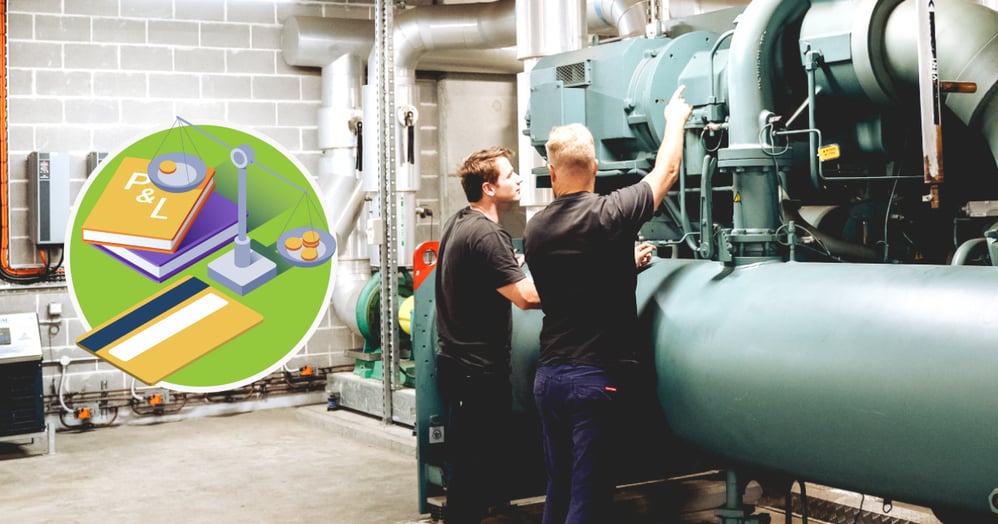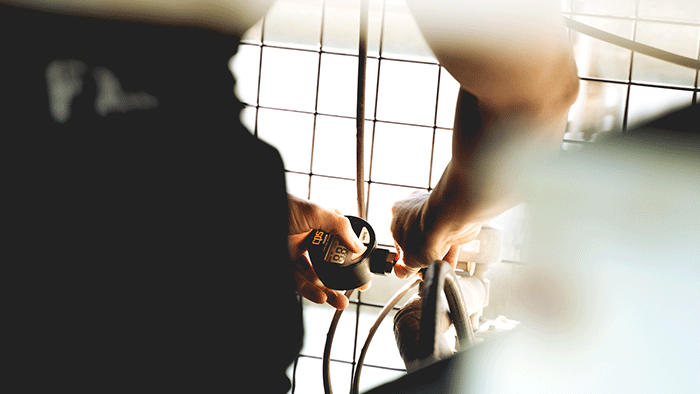How To Price HVAC Jobs
by Team Tradify, March 2, 2022

Table of Contents
Regardless of size, niche, or age, nailing down the right price list for HVAC services is considered one of the most challenging parts of running a successful business. Unfortunately, many trade business owners build their price lists based on undercutting their competitors in the HVAC space.

While this strategy can lead some budget hunters to your door, you can also end up with a profit margin that's less than what it should be. Many things are factored into creating a smart pricing model. It pays to remember that pricing a service is different from pricing a physical product.
Unlike pricing products, pricing services like heating repairs will require more careful consideration and thorough research. While there is no one-size-fits-all process when creating your price list, it is reassuring to know you have more opportunities to calculate the value of your time.
Your quick and easy guide to creating a smart pricing list template
Below is your straightforward guide to creating a pricing template that can help your HVAC business thrive while keeping you, your HVAC experts, and customers happy.
Jump ahead:
- 1. Do some market research.
- 2. Determine your target.
- 3. Determine your break-even point.
- 4. Pick an HVAC pricing model.
- 5. Calculate your project costs.
- 6. Set profit goals.

1. Do some market research
If you want to create a good HVAC price list template, you need to conduct some market research first. Start by looking for information about your regional and local HVAC competitors. Check out the services they're offering and how much they're charging on average.
From there, you need to determine the closest competition. You can do this by looking for a business that is the closest in size to yours. This strategy can give you a better insight into how your competitors work and stay in business. Ultimately, you can get some ideas on how you can manage and run your business as well. Apart from pricing, other important things you should research include:
- Who your target customers are.
- What your customers want the most.
- The most common service requests.
- The most common services.
- What makes certain HVAC businesses stand out from the rest.
A clear and accurate answer to those questions can help set you up for success when working on your HVAC price list template. You will also be able to assess your business potential and get a realistic feel of how your HVAC business will fit into the local HVAC scene.
2. Determine your target (and ideal) customer
If you want to sell more effectively to customers and beat your competitors, you need to have some insights from the local market you're targeting. Start by figuring out your ideal customer. You can determine your ideal customer by answering the following questions:
- What is their age range? This will give you an idea of what channels you can use to target them. If they're younger, try social media. If they're older, maybe a business directory.
- Are they married or are they single? If they're married, try to establish a single point of contact. This way, you can get one set of instructions/standards that you can stick to, without the significant other asking for something totally different.
- What is their education level? This will help you decide how best to approach your marketing. You can dial up or dial down the technical lingo based on what you think your target will understand.
- What is their household income? This one's extra important. You need to put some serious thought into what you think your target can afford. Charge too little and you're missing out on profit; too much, and you're guaranteed to lose out on jobs.
- What are some of their biggest HVAC related problems/pain points? Figure out what HVAC services your target market need the most and make sure that you can offer them.
- What do they do for a living? This will help you figure out what their income is likely to be so you can price accordingly. It may also help to understand when and how it's best to contact them. If they're in an office, an email could work great. If they're out on the road, then try giving them a phone call instead.
The more detailed you are when answering the questions above, the easier it will be for you to figure out the people you are targeting.
3. Determine your break-even point
If you want to find out the minimum amount needed to charge for HVAC jobs, you first need to find your break-even point. To get started, add up all of your monthly overhead costs such as:
- Vehicle insurance
- Tool/hardware insurance
- Software/IT
- Property rental costs
- Utilities
- Vehicle payments
- Staff pay
- Business insurance
- Equipment/vehicle maintenance
It is also important that you add up all your costs when completing HVAC jobs. Once you have added everything up, you now have your total monthly business overhead expenses. Next, you need to figure out the total estimated labour costs. You can find the estimated labour cost by multiplying the following together:
Total estimated labour cost = Average pay x Hours worked x Number of techs on the team
Then, you need to determine your total monthly revenue required (or your break-even point) by using the following calculation:
Break-even point = Total monthly business overhead expenses + Total estimated labour costs
If you want some more info on analysing your break-even point, check out our blog on break-even analysis for small trade businesses.
4. Pick an HVAC pricing model
When choosing your HVAC pricing model, keep in mind that it can be a factor in calculating your costs and your profit goals.
Time and materials pricing
With this model, the customer will be billed for the technician's time and other additional costs while working on the job. Some HVAC businesses prefer this model because it helps ensure that the jobs are always profitable. However, time and materials pricing can be harder to sell to first-time customers.
Flat-rate pricing
With the flat-rate pricing model, you will be combining the technician's hourly rate with the cost of parts required. The costs will be shown to the customers upfront, so they know how much they will pay before labour begins. This model will require an accurate cost of materials and average times.

5. Calculate your project costs
To figure out how much you need to charge for certain projects, you must calculate your cash flow. Start by figuring out the total project material expenses. You can find the answer by adding the following together:
Total project material expenses = Disposal costs + Total cost of chemicals per job + Total cost of equipment and parts per job.
Ensure you include all the specific projects costs to your list. Next, you need to determine the total project materials cost by incorporating the previous calculation in the formula below:
Total project material cost = Total project material expenses + (Total project material expenses x Profit margin)
To calculate the total labor costs, you calculate the initial labor costs by multiplying the following:
Initial labour costs = Estimated number of hours x Hourly rate
The next thing you need to do is calculate your total project labor costs by using the formula below:
Total project cost = Total project material cost + Total project labor cost
6. Set profit goals
To set realistic profit goals, you first need to calculate your net income. Use the following formula to calculate your net income:
Net income = Total revenue - Materials costs - Labor costs - Overhead costs
Next, you need to determine your profit margin. To do this, use the formula below:
Profit margin = Net income / Total revenue
Test out different profit margin goals to know what suits you best. Remember that your sales goals will simultaneously increase alongside your increased profit margin goals. Your primary goal should be to keep the profit goals ambitious yet realistic and achievable.
7. Final thoughts
As with any important financial decision, it would be smart to have a trusted accountant or financial advisor check your HVAC pricing before making it final. Your financial advisor can also guide you on the changes you need to implement and other important factors you might need to include.
Get an idea of your cash flow by downloading our free Cash Flow Forecast Template!
Sign up for a 14-day free trial of Tradify or pop over to one of our live demo webinars to see the trade business management app in action.
This is a guest article written by Rachel Watson, the Senior Content Editor of Precision Air & Plumbing, a full-service HVAC, plumbing, and home performance contractor operating in Chandler, Arizona.
Related articles

Seamless Scheduling for Scoreboard Enterprises

The Best HVAC Safety Equipment

The Best PPE for HVAC Technicians
Give Tradify a go for free!
Save 10+ hours/week on business admin with the highest-rated job management software for tradespeople.
With free one-on-one training and phone support, it's never been easier to get started.


